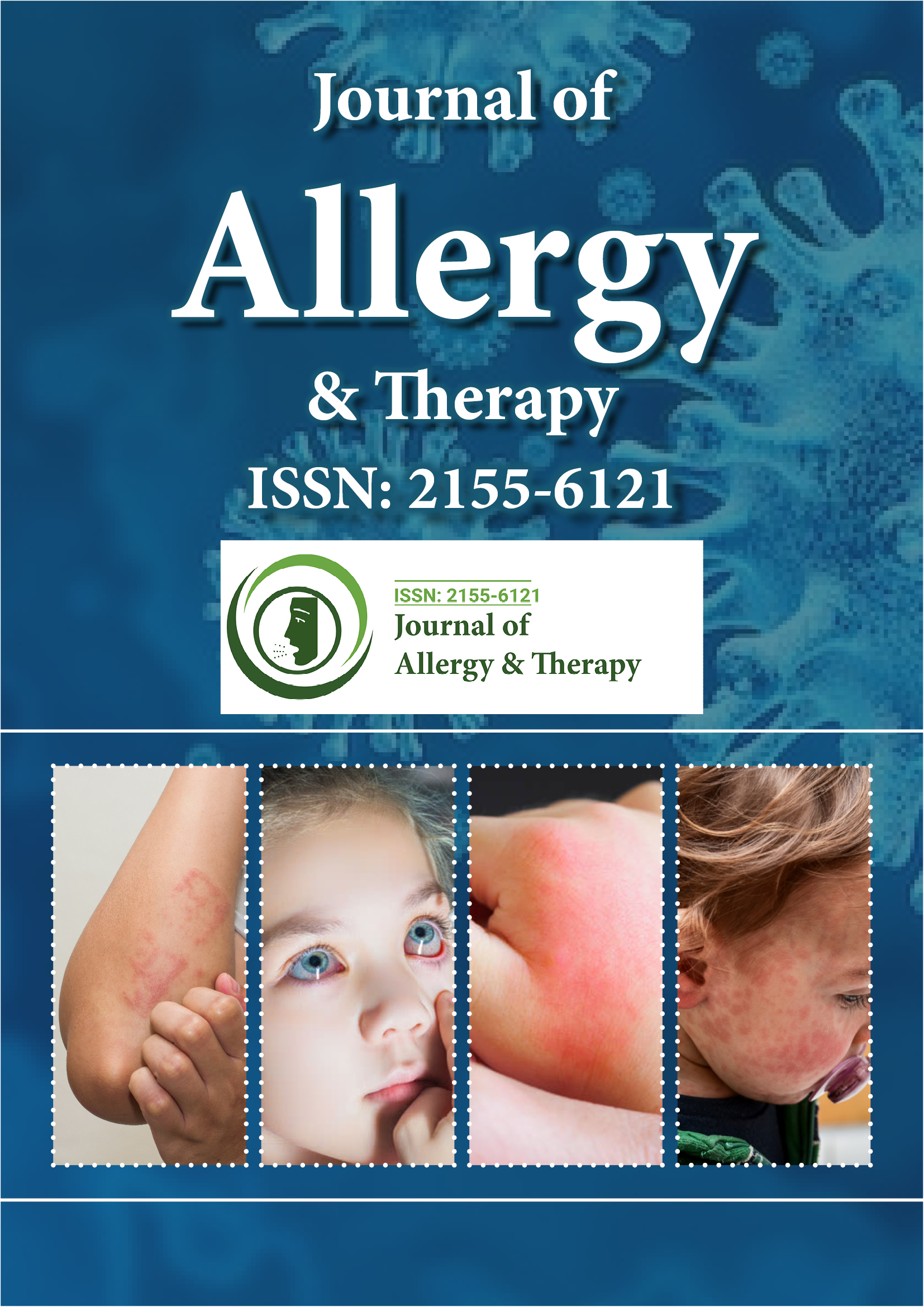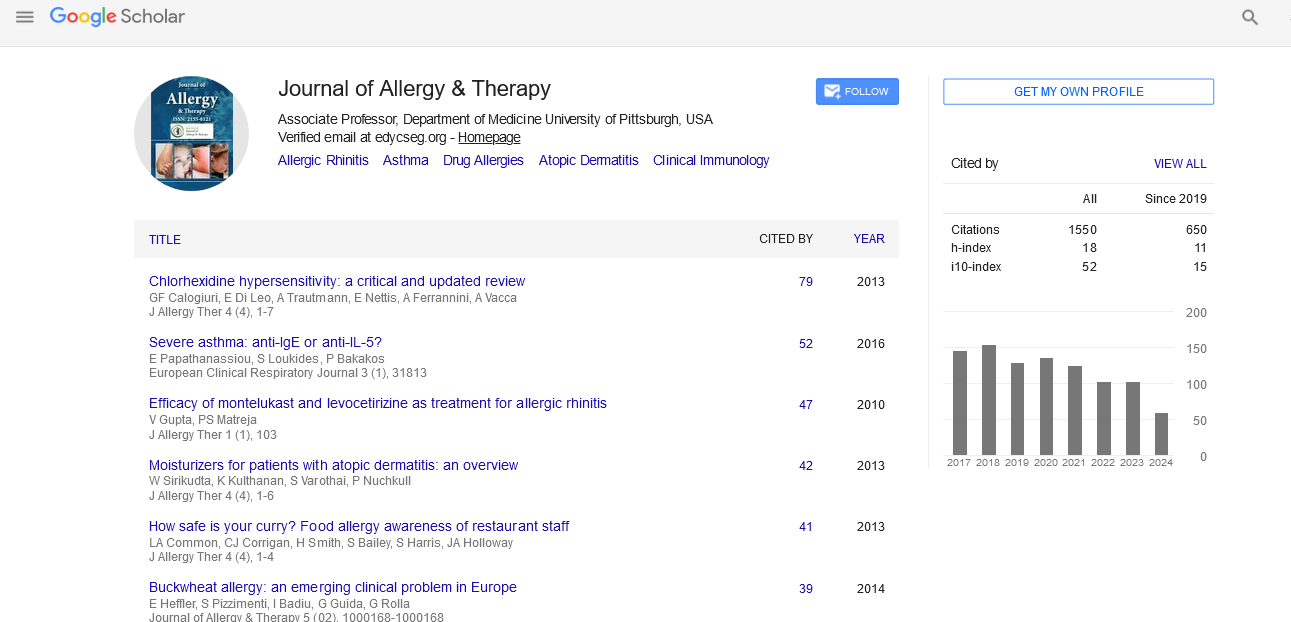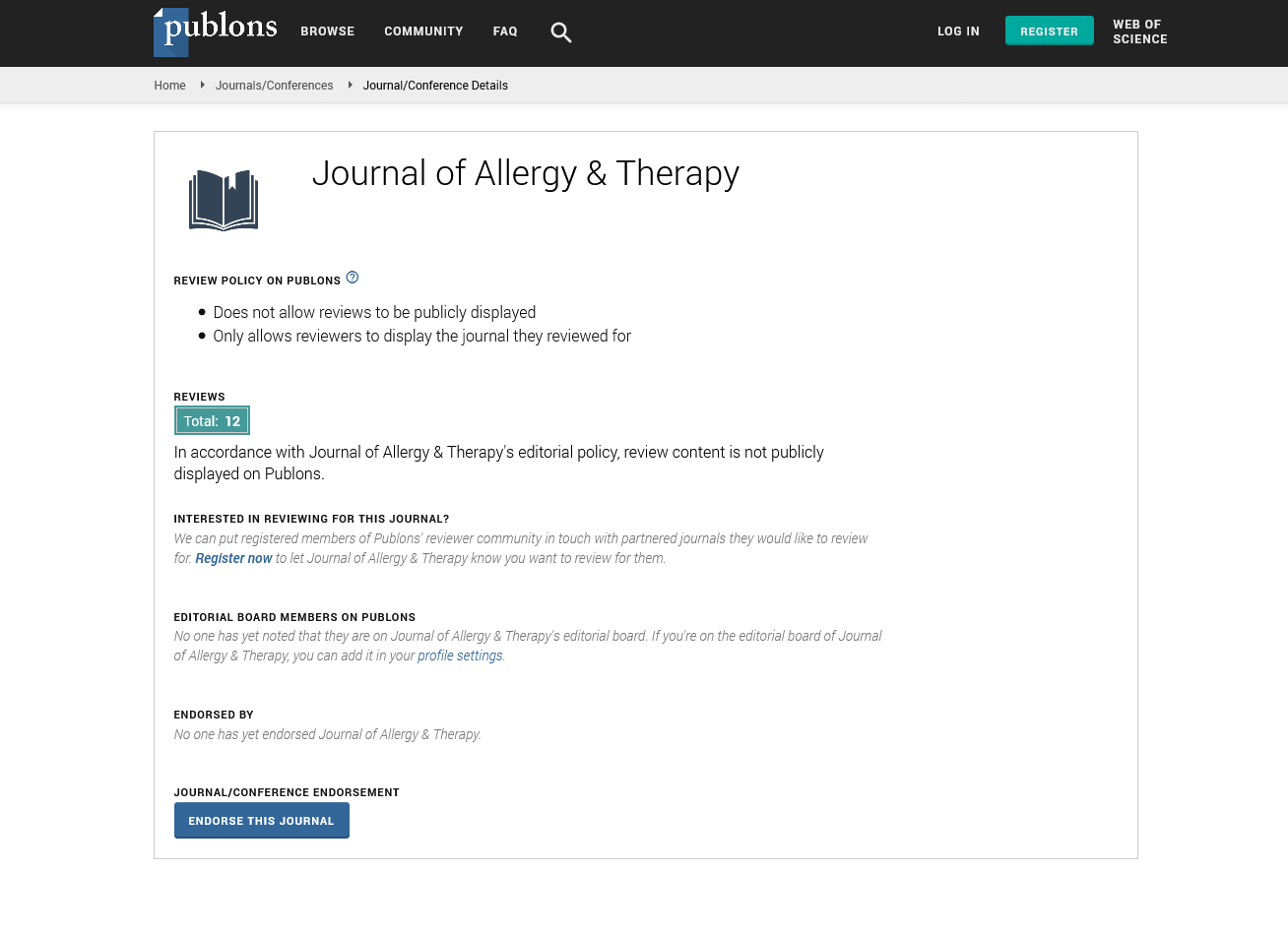Indexed In
- Academic Journals Database
- Open J Gate
- Genamics JournalSeek
- Academic Keys
- JournalTOCs
- China National Knowledge Infrastructure (CNKI)
- Ulrich's Periodicals Directory
- Electronic Journals Library
- RefSeek
- Hamdard University
- EBSCO A-Z
- OCLC- WorldCat
- SWB online catalog
- Virtual Library of Biology (vifabio)
- Publons
- Geneva Foundation for Medical Education and Research
- Euro Pub
- Google Scholar
Useful Links
Share This Page
Journal Flyer

Open Access Journals
- Agri and Aquaculture
- Biochemistry
- Bioinformatics & Systems Biology
- Business & Management
- Chemistry
- Clinical Sciences
- Engineering
- Food & Nutrition
- General Science
- Genetics & Molecular Biology
- Immunology & Microbiology
- Medical Sciences
- Neuroscience & Psychology
- Nursing & Health Care
- Pharmaceutical Sciences
Commentary - (2025) Volume 16, Issue 2
Understanding Rhinitis: Causes, Symptoms, Diagnosis, and Treatment of This Common Nasal Condition
Kanwaljit Brar*Received: 30-Apr-2025, Manuscript No. JAT-25-29449; Editor assigned: 02-May-2025, Pre QC No. JAT-25-29449; Reviewed: 16-May-2025, QC No. JAT-25-29449; Revised: 23-May-2025, Manuscript No. JAT-25-29449; Published: 30-May-2025, DOI: 10.35248/2155-6121.25.16.420
Description
Rhinitis is a common condition characterized by inflammation and irritation of the nasal mucosa, resulting in symptoms such as sneezing, nasal congestion, runny nose and itching. It affects individuals of all ages and can significantly impact quality of life, especially when persistent or recurrent. Rhinitis can be classified into different types based on its underlying cause, with the most prevalent forms being allergic rhinitis, non-allergic rhinitis and infectious rhinitis. Though often perceived as a minor inconvenience, rhinitis can lead to complications if left untreated, making awareness and proper management essential.
Allergic rhinitis is the most widely recognized form and is triggered by allergens such as pollen, dust mites, pet dander, mold spores, or certain occupational exposures. It is an immune system overreaction in which the body mistakenly identifies harmless substances as threats, releasing histamine and other chemicals that cause inflammation. Seasonal allergic rhinitis, commonly known as hay fever, is linked to specific pollen seasons, while perennial allergic rhinitis persists year-round due to constant exposure to indoor allergens. Symptoms typically include sneezing, nasal congestion, runny nose, nasal itching and often extend to itchy or watery eyes.
Non-allergic rhinitis, in contrast, does not involve an immune response and is not triggered by allergens. Its causes are diverse and may include environmental irritants like smoke, strong odors, weather changes, certain medications such as betablockers or aspirin, hormonal fluctuations and even emotional stress. This form of rhinitis often presents similarly to allergic rhinitis but lacks the allergic component, as confirmed by negative allergy tests. Vasomotor rhinitis, one of the common types of non-allergic rhinitis, is believed to result from abnormal regulation of blood flow in the nasal passages, though its exact mechanisms remain unclear.
Infectious rhinitis is usually caused by viruses, such as the common cold (rhinovirus) and is associated with acute symptoms like a stuffy or runny nose, sore throat, cough and mild fever. Bacterial infections may follow a viral episode, leading to secondary rhinitis or sinusitis. This form is generally self-limiting and resolves within a week to ten days, although supportive treatments can help alleviate discomfort during recovery.
Diagnosing rhinitis typically begins with a detailed clinical history and physical examination. Physicians inquire about the onset, duration, frequency and pattern of symptoms, as well as any known triggers or family history of allergies. Nasal examination may reveal swollen turbinates, clear or thick nasal discharge, or other signs of inflammation. In cases where allergic rhinitis is suspected, allergy testing—either through skin prick tests or serum-specific IgE blood tests can identify specific allergens. Nasal endoscopy and imaging, such as a CT scan of the sinuses, may be used in complex cases or when sinus involvement is suspected.
Treatment strategies for rhinitis depend on the type and severity of symptoms. For allergic rhinitis, avoidance of known allergens is the first step in management. This includes using High-Efficiency Particulate Air (HEPA) filters, washing bedding frequently, minimizing outdoor activity during peak pollen times and keeping pets out of bedrooms. Pharmacologic treatments include antihistamines, which block histamine receptors and relieve sneezing and itching; intranasal corticosteroids, which reduce inflammation and are highly effective for nasal congestion; decongestants, which provide temporary relief but should not be used long-term; and leukotriene receptor antagonists, which block inflammatory pathways involved in allergic reactions.
For non-allergic rhinitis, treatment focuses on symptom control and identifying potential triggers. Intranasal antihistamines and corticosteroids are sometimes effective, even in the absence of allergy. Saline nasal irrigation can help clear irritants and soothe nasal passages. Avoidance of environmental irritants and review of medications that may be contributing to symptoms are also key components of management. In some cases, anticholinergic nasal sprays are prescribed to reduce excessive nasal discharge.
Immunotherapy, also known as allergy shots or sublingual tablets, is an option for patients with moderate to severe allergic rhinitis who do not respond adequately to medications. This treatment involves repeated exposure to small amounts of allergens to build tolerance over time. While it requires a long-term commitment, immunotherapy can lead to significant symptom reduction and decrease the risk of developing asthma in allergic individuals.
Complications of uncontrolled rhinitis can include chronic sinusitis, middle ear infections, nasal polyps, sleep disturbances and decreased concentration or productivity. Children with allergic rhinitis may experience impaired school performance or behavior issues. Moreover, rhinitis is often associated with other allergic conditions such as asthma and atopic dermatitis, forming what is known as the "allergic march."
Preventive measures and lifestyle modifications play an important role in managing rhinitis. Maintaining a clean indoor environment, managing stress, staying hydrated and avoiding exposure to known irritants or allergens can help reduce symptom frequency and severity. Smoking cessation is particularly crucial, as tobacco smoke is a significant irritant and exacerbates nasal inflammation.
Conclusion
In conclusion, rhinitis is a multifactorial condition that, despite its commonality, deserves careful attention due to its impact on health and quality of life. Accurate diagnosis and individualized treatment are essential for effective management. Advances in allergy testing, medications and immunotherapy have greatly improved outcomes for patients with both allergic and nonallergic forms. With greater public awareness and medical support, those affected by rhinitis can achieve lasting relief and prevent long-term complications.
Citation: Brar K (2025) Understanding Rhinitis: Causes, Symptoms, Diagnosis and Treatment of This Common Nasal Condition. J Allergy Ther.16:420.
Copyright: © 2025 Brar K. This is an open-access article distributed under the terms of the Creative Commons Attribution License, which permits unrestricted use, distribution and reproduction in any medium, provided the original author and source are credited.


